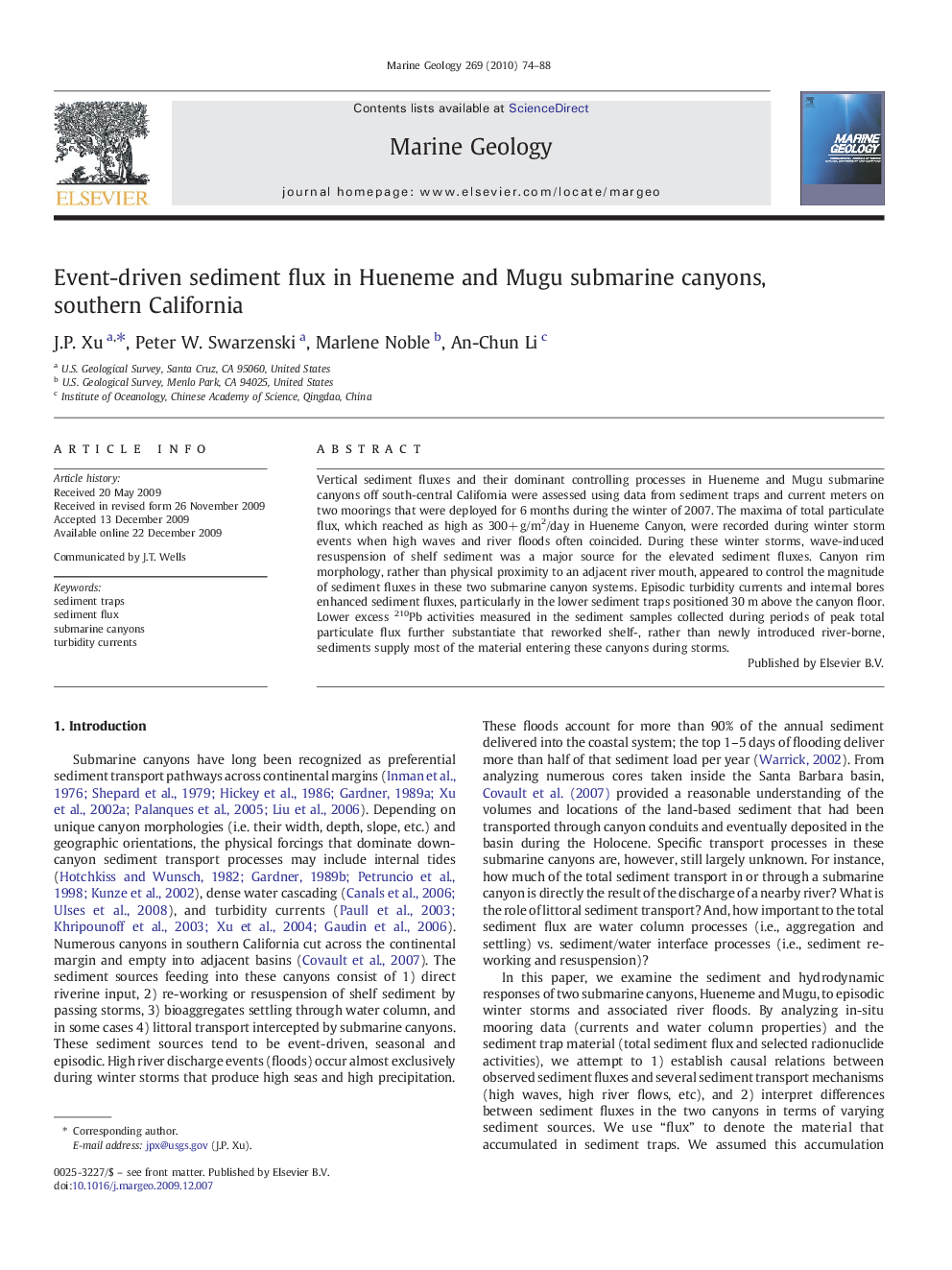| Article ID | Journal | Published Year | Pages | File Type |
|---|---|---|---|---|
| 4719021 | Marine Geology | 2010 | 15 Pages |
Vertical sediment fluxes and their dominant controlling processes in Hueneme and Mugu submarine canyons off south-central California were assessed using data from sediment traps and current meters on two moorings that were deployed for 6 months during the winter of 2007. The maxima of total particulate flux, which reached as high as 300+ g/m2/day in Hueneme Canyon, were recorded during winter storm events when high waves and river floods often coincided. During these winter storms, wave-induced resuspension of shelf sediment was a major source for the elevated sediment fluxes. Canyon rim morphology, rather than physical proximity to an adjacent river mouth, appeared to control the magnitude of sediment fluxes in these two submarine canyon systems. Episodic turbidity currents and internal bores enhanced sediment fluxes, particularly in the lower sediment traps positioned 30 m above the canyon floor. Lower excess 210Pb activities measured in the sediment samples collected during periods of peak total particulate flux further substantiate that reworked shelf-, rather than newly introduced river-borne, sediments supply most of the material entering these canyons during storms.
